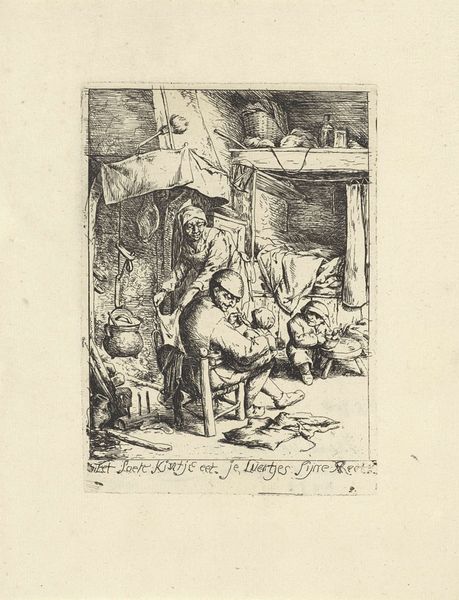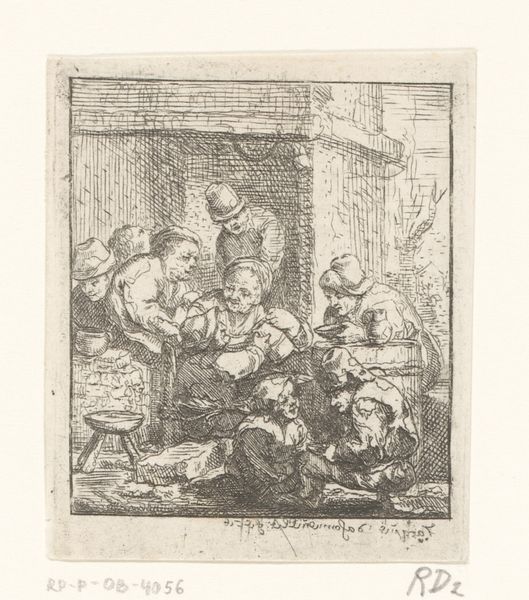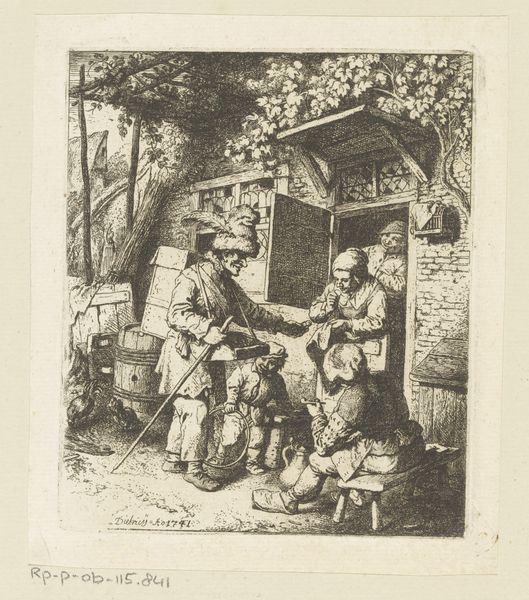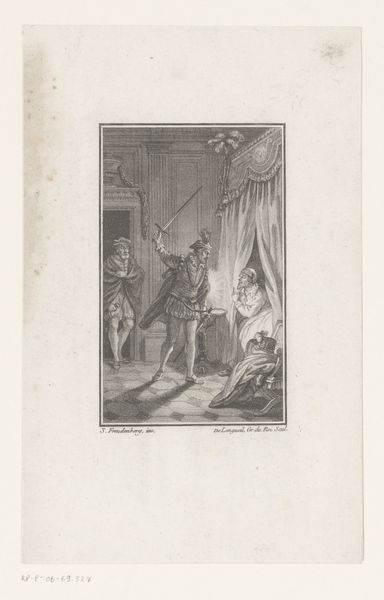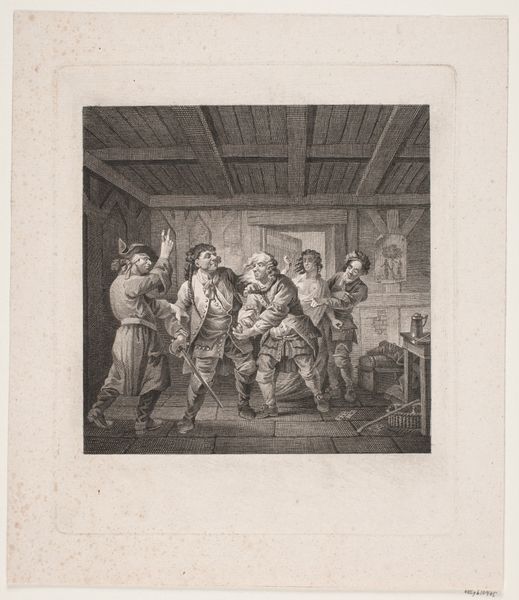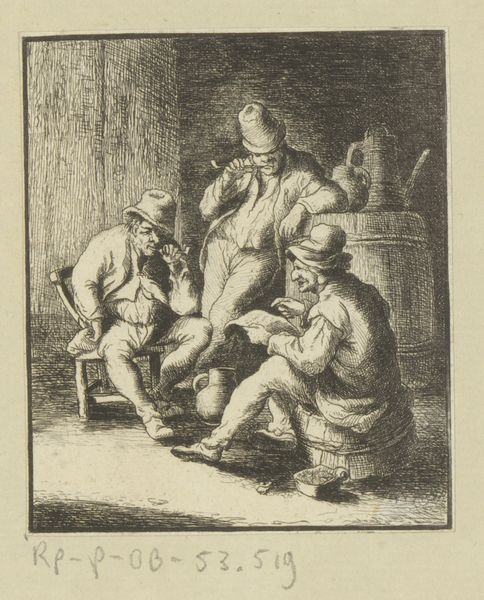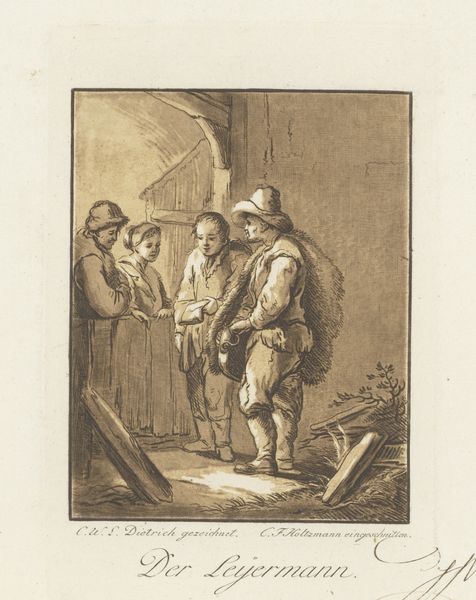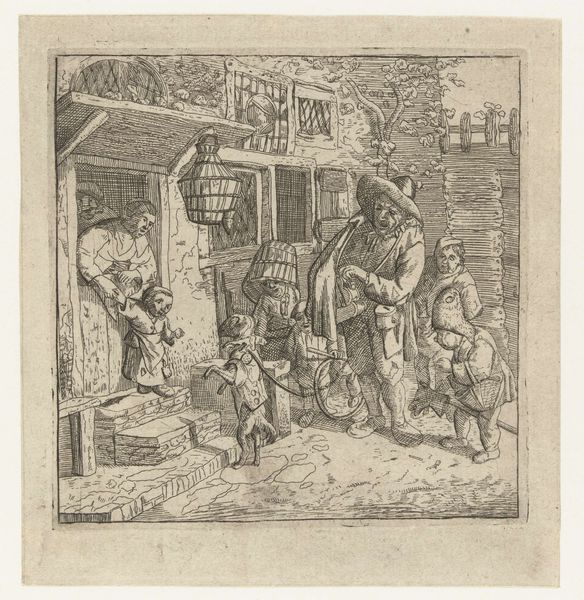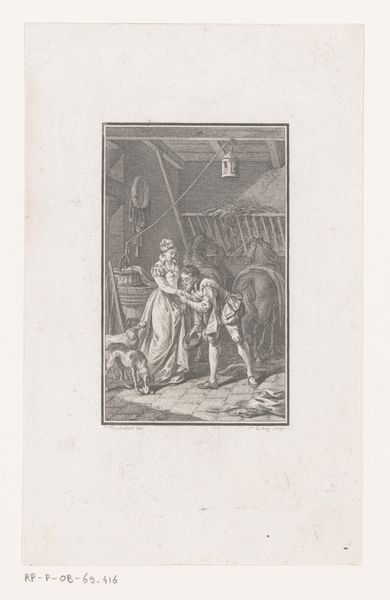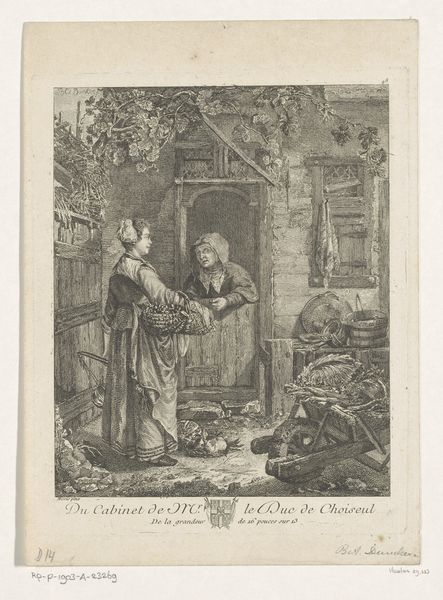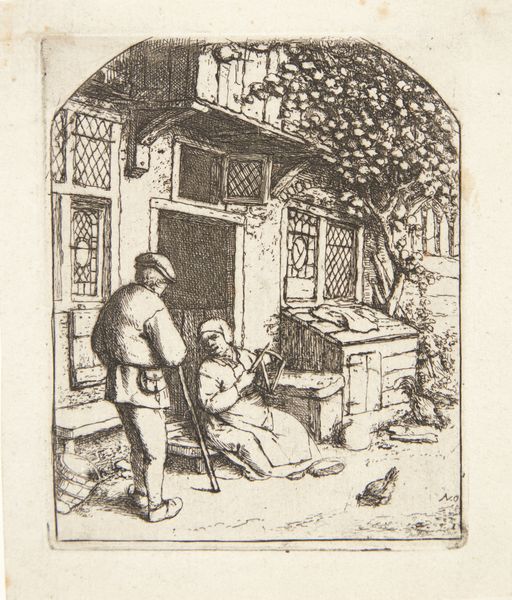
print, etching
#
portrait
#
narrative-art
#
dutch-golden-age
# print
#
etching
#
old engraving style
#
figuration
#
genre-painting
Dimensions: height 146 mm, width 123 mm
Copyright: Rijks Museum: Open Domain
Curator: Matthias Scheits created "Vioolspeler en zangeres," or "Violin Player and Singer" in 1672. It's an etching. I'm immediately drawn to the intimate narrative. It seems a common scene depicted with care. What stands out for you? Editor: My first thought goes to the way this work uses the medium of etching. Notice the fine, almost frenetic lines building form and texture, but also evoking a somber tone through contrast. Curator: Right, etching allowed for a democratized circulation of images, especially those depicting everyday life, like street musicians, who we see here alongside children peering from windows. There's an element of spectacle being portrayed. Who is allowed to be an audience and who is providing labor? Editor: Exactly, and that relates to the material context as well. Etchings could be mass-produced and distributed to a wider audience, thereby shaping cultural taste. I see that labor very distinctly in the lines themselves and wonder how the act of repetitious scoring impacts the work's meaning. Curator: The texture produced through labor, absolutely. These weren't the wealthy elite commissioning grand portraits. We're seeing images for and of the middle classes, reflecting a burgeoning sense of identity. Look at the figure in the doorway behind the musicians, subtly observing from within her domestic sphere. Editor: Yes, her inclusion, the attention to those peering out of the window. These are very human-scaled details. It also makes me wonder what songs are being played? Were these forms of cultural expression being codified at the time? This etching documents what could also be seen as ephemeral histories. Curator: What I find particularly striking is how this image embodies tensions inherent to Dutch Golden Age art: blending meticulous detail with the spontaneity of genre scenes, speaking to broader audiences but subtly reinforcing social hierarchies. Editor: A blending enacted through labor, and mediated through material. Curator: Indeed. It presents a moment while subtly alluding to complex questions about access, representation, and the evolving dynamics of a society experiencing both artistic flourishing and social stratification. Editor: Ultimately it feels more critical and self-aware of the Dutch Golden Age than perhaps first meets the eye.
Comments
No comments
Be the first to comment and join the conversation on the ultimate creative platform.
